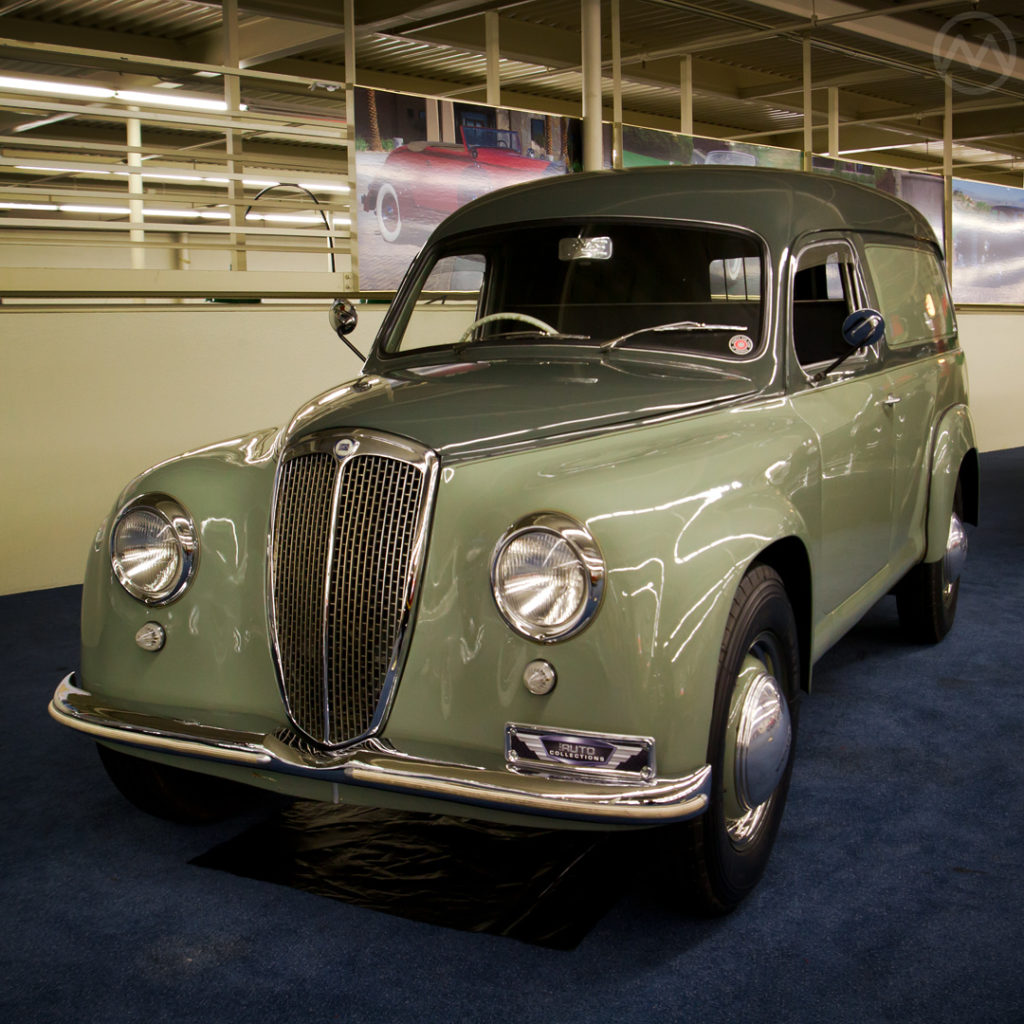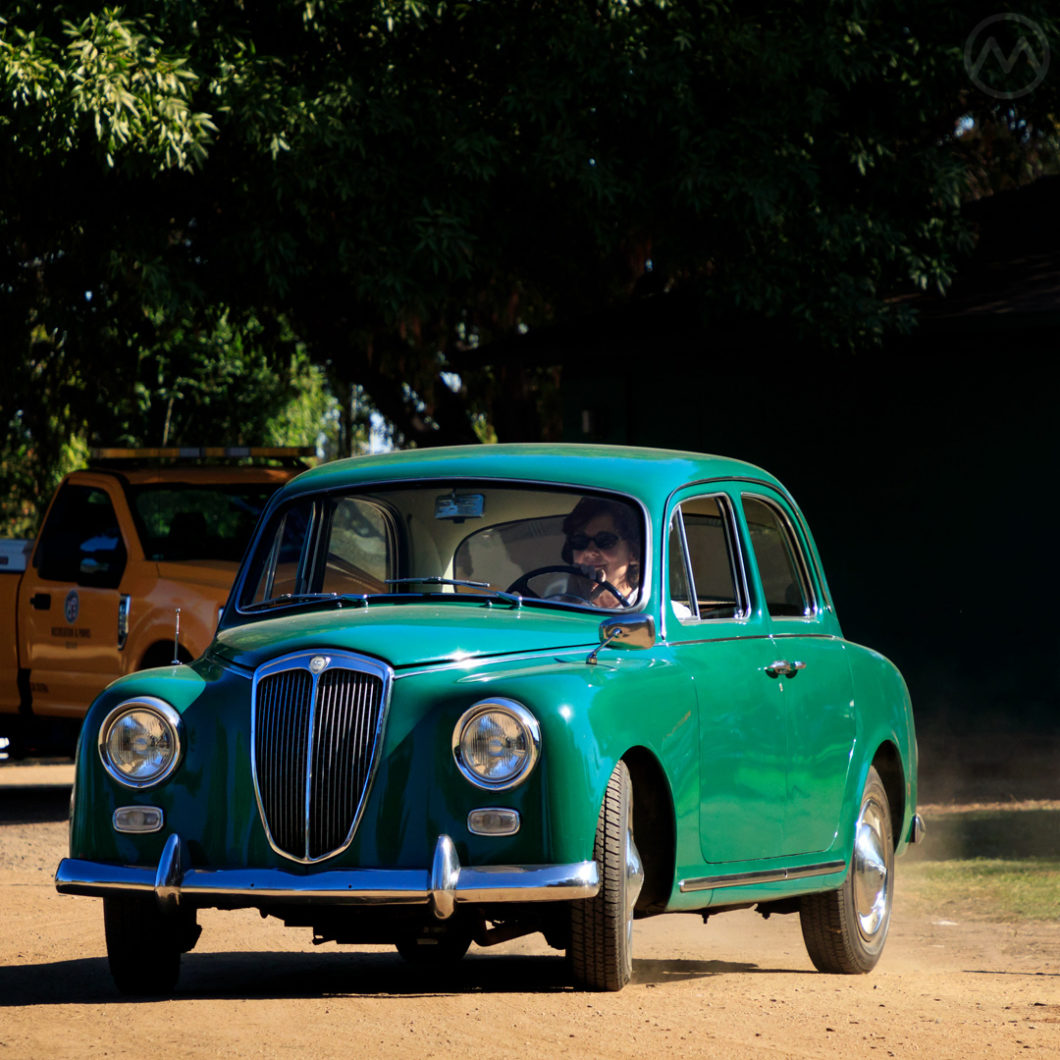As the pre-war Aprilia gave way to the 1950 Aurelia, so too eventually did the “junior” Lancia – the pre-war Ardea being replaced by the Appia in 1953.
The Ardea may have looked old-fashioned, but underneath it was still very modern. While the Appia was largely a clean-sheet car, much of the thinking was the same. It had a light and strong shell despite having no B-pillar, got power from a V4, and was the last car to use Lancia’s “sliding pillar” front suspension.
Like all classic Lancias, was a jewel of a car – beautifully engineered with only casual attention paid to how much it cost to make or how practical it was. Nevertheless, the Appia’s tenure wasn’t always La Dolce Vita.
A Modern Junior Lancia
The style origins of the original Aurelia Berlina are obscure, sometimes attributed to Amedeo Piatti and sometimes to Pininfarina. Regardless of who styled it, the same basic look was slimmed down for the smaller Appia, just as had been the case for the Aprilia/Ardea.
Like its predecessor, the front doors were hinged at the front and the rears at the rear, with clasps high and low, closing in the center but with no central pillar. If you parked the car and opened all the doors it was a nice place for a picnic and access was easy. These were probably two things that were more important to customers than side impact protection at the time.
You’d think that would make the Appia a flexible flyer, but the chassis was quite robust underneath (by the standards of 1953). It weighed only ~1,900 lbs. thanks to lightweight parts – including easily-mauled aluminum bumpers.
The delicate detailing of the cars would prove impractical on the city streets of Turin, to the chagrin of some customers in the near term. At the same time, the lack of the central pillar meant that structural rust felled many an Appia later on in life – what structure it had, it needed.
Under the hood there was a new V4, now a 10-degree job of 1,090-cc designed by chief engineer Vittiorio Jano, who had overseen development of both the Appia and the Aurelia.
Vittorio Jano
When Vincenzo Lancia had died in 1937, Jano had been lured away from Alfa-Romeo, where he had designed the great engines and machines that Tazio Nuvolari raced so effectively. He would stay with Lancia until 1955.
As with all Lancias, Appias didn’t come cheap and very quickly the car was undercut by several Fiats (primarily the 1100, but also the 1400) and, after 1954, the Alfa Giulietta. Those cars sometimes just offered more value – and customers weren’t wild that the early Appias seemed to be of lower quality than the Ardea had been.
Part of that went back to the aluminum parts and possibly slipshod assembly, but a lot of it was just not being able to make the car at competitive cost. Lancia’s domestic marketshare declined from almost 10% to 3% by 1956, and the Appia was supposed to be the volume seller.
Refining the Appia was also not really a priority for Jano, who was heavily concentrated on the Lancia D50 GP car in 1954. The racer was legendary, but it also took a huge financial toll on the organization, and ended, for Lancia, with the tragic death of Alberto Ascari on May 26, 1955.
But the spring of 1955 was an era of transition one way or another.
Facing heavy losses, the Lancia family were in talks to sell off the company, which they eventually did, to Italian cement and real estate magnate Carlo Pesenti in mid-1956.
But before that, Gianni Lancia hired professor Antonio Fessia – a longtime Fiat engineer who had also showed the unsuccessful, but highly advanced, CEMSA-Caproni front-driver in the early 1950s.
With the D50 project falling apart and Lancia in free-fall financially, Jano departed to reunite with his old friend Enzo Ferrari. The D50 became the “Lancia-Ferrari D50” as Ferrari bought the project whole and united the car with Juan Manuel Fangio’s talents.
Prof. Fessia To the Rescue
Meanwhile, Fessia had taken over dealing with the road cars that April, and a year later the Series II Appia Berlina bowed at Geneva – a more refined car with a longer wheelbase and Mercedes or Peugeot 403-like rear styling.
Fessia had instituted a program of cost controls and of making higher quality but sometimes heavier parts and as a result the S2 got much better reviews from the press and customers. Unfortunately the Appia still didn’t sell well. The company was now heavily outpaced by booming Alfa-Romeo, which had effectively moved down into Lancia’s market.

That changed only with the introduction of the S3, introduced in early 1959, with a Flaminia-influenced front-end restyle. Suddenly, the Appia with this new face became reasonably popular.
Many specially-bodied Appias were made – not only coupes and convertibles (Pininfarina, Vignale, Zagato) but also pickup trucks and vans, which were generally working vehicles and rarely seen outside of Italy. The truck bodies were usually offered by Lancia itself; though eventually a Viotti-built wagon was offered as a semi-factory option starting in 1959.
The S2, with Fessia’s refinements but Lancia’s classic shield grill, is one of the rarer versions today – caught between the early cars and the more populous later versions. With sales booming, some thought was given to an S4 Appia, but it was instead replaced with Fessia’s front-drive Fulvia in 1963.

